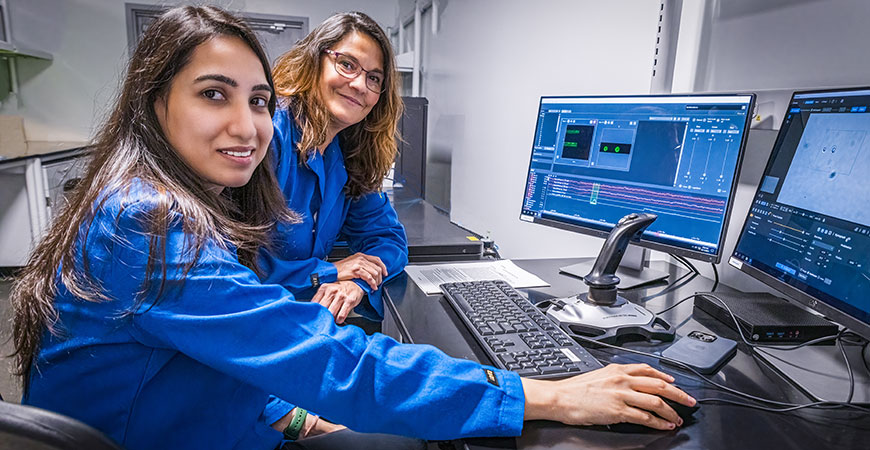
When it functions correctly, inflammation protects the body from infection and injury. But when it becomes chronic, inflammation is linked to health problems such as heart disease, diabetes, cancer, arthritis and bowel diseases, including Crohn's disease and ulcerative colitis.
Bioengineering Professor Eva de Alba Bastarrechea, postdoctoral scholar Meenakshi Sharma and graduate students are researching how to control and inhibit inflammasomes, the multiprotein complexes that spark the body’s inflammatory response. When they become dysregulated, inflammasomes cause chronic inflammation.
The National Institutes of Health has given her a two-year, nearly $400,000 Exploratory/Developmental Research Grant (R21) to test a unique tool to understand inflammasome formation and regulation. The results could further the understanding of inflammation and help in the design and improvement of therapeutics to inhibit the response before it leads to life-threatening disease.
“Inflammasomes sense danger signals from pathogens and tissue damage and trigger the inflammatory response. Inflammation’s purpose is to localize and eliminate whatever is causing injury and remove damaged tissue components so the body can begin to heal,” said de Alba Bastarrechea, a member of the Health Sciences Research Institute.
The ability to identify the factors controlling inflammasome assembly and inhibition is critical to designing molecular interventions for inflammasome manipulation.
“Such studies are very challenging because there are many players involved, and inflammasome proteins tend to self-associate and aggregate, as it is in their nature,” she said.
Her proposal involves single-molecule techniques — a way to study detailed physical and chemical properties — in combination with microscopy for visualization.
“This will allow us to have full control of the different players and the experimental conditions. We can determine the kinetics associated with inflammasome formation at the single-molecule level, identify molecular mechanisms of inflammasome growth and find the most efficient ways to inhibit inflammasome formation,” she said. “We can monitor the initial stages of inflammasome formation in real time and reveal as-yet unknown information on the kinetics of association/dissociation, the effect of relative protein concentrations on assembly, and overall shape and size of the inflammasome as it grows.”






